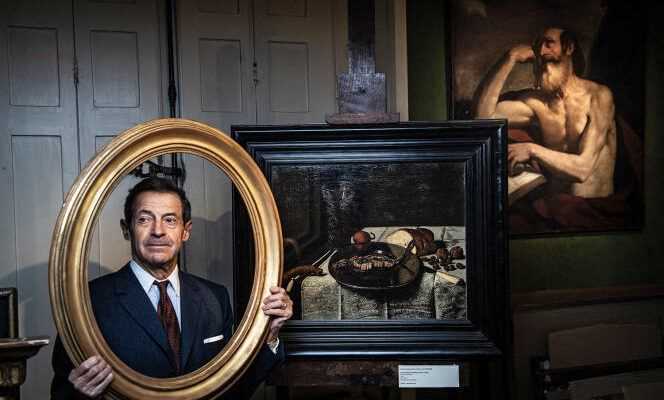Class ease is, just after his exceptional knowledge of painting, from the Italian primitives until the 19th century.e century, the other asset of Eric Turquin. At 69, this independent expert extols with emphasis his latest discovery, a Philosopher reading, by Fragonard, who disappeared for more than two hundred years, which will be auctioned in Epernay (Marne) on June 26.
“A masterpiece saved from oblivion”, se he boasts on his website, which stresses the strength of his firm, founded in 1987: a team of nine people, assisted by consultants, who carry out around 15,000 appraisals per year. “We have become a factory of discovery”, ignites the man in the double-breasted suit, whose enthusiasm as a juggler is decisive in determining the value of a work put up for auction. “Look at this philosopher: he does not read, in reality, he reflects on the text! It’s all the lightness and virtuosity of the Age of Enlightenment combined! “
At a rate of 5% taken from the proceeds of sales, his firm prospered. While Christie’s and Sotheby’s specialists dominate the market in the United States, Great Britain and almost everywhere in the world, Eric Turquin is this little Frenchman who imposes himself on the behemoths.
Master strokes
The Turquin firm has made such rediscoveries a specialty. His right arm, Stéphane Pinta, for example, identified the touch of Cimabue, an extremely rare painter of the 13th century.e century, behind a religious scene hung in a kitchen in Compiègne. Duly reallocated, the panel is awarded for 24 million euros, the highest bid in France in 2019. It is again his cabinet which, the same year, spotted the paw of a very confidential Czech, the master by Vyšši Brod, behind a Madonna and Child. Bingo: the table sells for 6.2 million euros in Dijon.
The eldest of a family of the agricultural aristocracy of Aisne, in Quincy-Basse, Eric Turquin abandoned forest management to become a leading figure in the antique paintings market. Outsmarting the fate all traced by his father – “He wanted me to be a senior civil servant, I took part in the Sciences Po competition” -, Eric Turquin studied law, then enrolled at the Ecole du Louvre. Passed the auctioneer exam, he opts for expertise. His natural sensitivity attracts him to contemporary art.
But “Out of opportunism”, He concedes, he falls back on old painting: the average age of the experts was then high, the competition less fierce. The Rastignac can hope to make its hole. From this strategic choice, he will make a passion. Hired in 1979 at Sotheby’s, in London, as a cataloguer, the young man climbs the ranks to head in 1985 the department of old paintings.
You have 51.82% of this article to read. The rest is for subscribers only.
